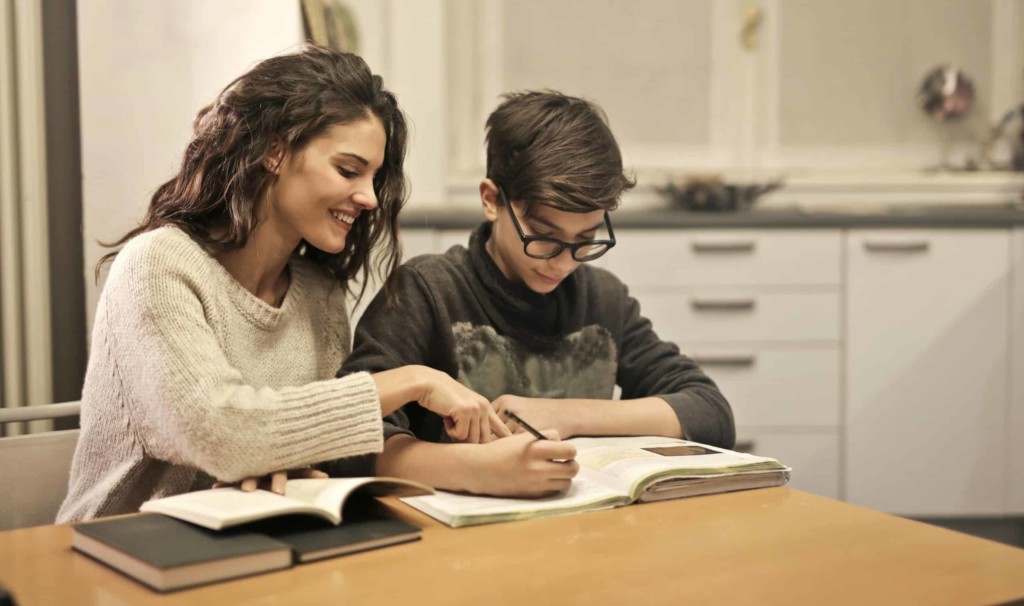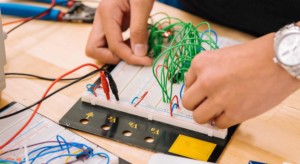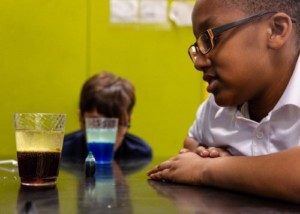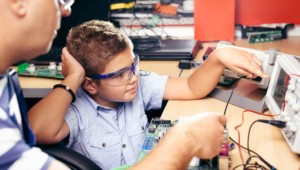Embracing Partners: 7 Human Resources of PBL

Successful project-based learning has many foundational elements. A few of these include student work going public, working to sustain the learners in deep inquiry, critique and revision, authenticity, and focusing on real-world challenges. And in a world that is rapidly becoming more tech-infused, globalized, and automated, there is one magic bullet that addresses the aforementioned PBL elements, as well as these evolutionary changes. It’s People: The Human Resources of Project-Based Learning. Here are seven types of potentially valuable partners that can increase the quality and reach of any project:
Student Peers
Naturally, we need to begin with the most obvious and immediate people in any class or school. These are the learners’ peers. Student peers can serve as the first line of feedback in order to revise and improve work. What if older or more experienced students coached, advised, or were involved in student projects? Students can also serve various roles. For example, what if one’s class or program had a Media Coordinator responsible for coordinating the video work? Or a Social Media Coordinator handling the class Facebook, Instagram, and Twitter Accounts? How about a Project Coordinator responsible for calendars, roles, timelines, and deliverables? It’s not about titles for title sake. It’s about students taking greater responsibility for the strategic roles in the classrooms. It’s about allowing students to bring their expertise and experience forward for the greater good, while also enhancing their skills, resumes, and portfolios.
Staff Peers
Projects are a great opportunity to involve administrators, instructional coaches, other teachers, and classified staff. Think about inviting an administrator in for feedback, expertise, and project management. This will help students see their administrator differently, while also giving administrators a chance to be deeply involved in the instruction (which they are supposed to be). As we put together panels to hear presentations, critique student work, or be involved in any aspect of the project, think about how valuable the classified staff are. In many cases, they already have close relationships with the students. However, now the students will see them differently and realize they are too professional adults with lots to offer. The classified staff members will get to understand the instruction and teachers better allowing them to have more empathy and ways to support. Projects should be experienced as school-wide and community-based endeavors.
Local Leaders
Most communities have some sort of local leadership – i.e. city council, county supervisors, the mayor, and school board to name a few. These are typically elected officials who represent constituents that would include the students, staff, and community of a school. Therefore, I could argue they are obligated to be involved. That being said, these are excellent potential partners to reach out to for project support. Again, they can serve on panels to evaluate student work and presentations. However, they might also be able to bring expertise, resources, project ideas, and mentoring. All of our learners need to connect to community and mentors outside of school. These local leaders represent a good place to begin that important connection.
Business Professionals
Local professionals in our communities have so much to offer for work in the area of PBL. Like our elected officials, our school communities make up their customer base. So, there should be some natural interest. But that’s especially true if the project relates in some way to their business, industry, or expertise. They naturally might be able to offer the expertise that could be used throughout project work and be part of feedback, critique, evaluation, and assessment. Additionally, however they might have projects or work that our students can be a potential part of as well. Maybe they have needs or challenges that could become driving questions. Our students would really benefit from being exposed to general entrepreneurial skills, how to make an effective pitch or how to write a business plan. These folks also represent future potential employers of our students and we can model that ‘every day is our resume’ to all of our learners.
Non-Profit Partners
Virtually every community has local non-profit organizations that are poised perfectly for our students to partner with in many ways. And if our local community doesn’t, we can connect with regional, national, and even international non-profit partners with a few keystrokes online. These non-profit organizations can support our projects and learners in many ways. One, they are engaged and focused on addressing real-world problems and needs. Our students can join their team. Two, they often do not have large budgets and will welcome student work as contributing to the larger mission in the form of public service announcements, videos, campaigns, event support, and more.
Higher Education
Most of our communities are home to some sort of higher education institutions – public universities, community colleges, technical schools, or private colleges. These institutions employee faculty who are not only instructors but experts in their field. Naturally, they could serve in the capacity of an advisor, expert, panel member, or guest speaker. But many are also involved in research or are working on addressing real-world problems. These can become the projects or challenges for our students as well.
Clients
This final partner possibility is unique and powerful. These are partners that explicitly agree to have our students work on a project that benefits the client in some way. Maybe they are a non-profit that needs content created (social media, videos, graphics, PSA’s or campaigns). Maybe a local business person could use help in producing ads, marketing pieces, updated products, new services, or customer survey data. Maybe they are just volunteers in the community who agree to have students provide a service (i.e. tax consultation, financial planning, or tech support). This creates an authentic opportunity for our students to produce work that serves and benefits others.
In an era where we often think of resources in the form of technology, equipment, or available funding, we need to demonstrate to our students that the most valuable resource we will always have is one another.
For more, see:
- Powerful School-Community Partnership Brings Learning to Life
- Business Partnerships in PBL…What Does That Really Mean?
- 3 Ways To Model Collaboration and Partnership in Schools and Classrooms
Stay in-the-know with innovations in learning by signing up for the weekly Smart Update.








The presentation is very clear and encouraging on the part of the students and teachers.
Project-based learning is a brilliant idea for the grouping strategy. Congratulations.